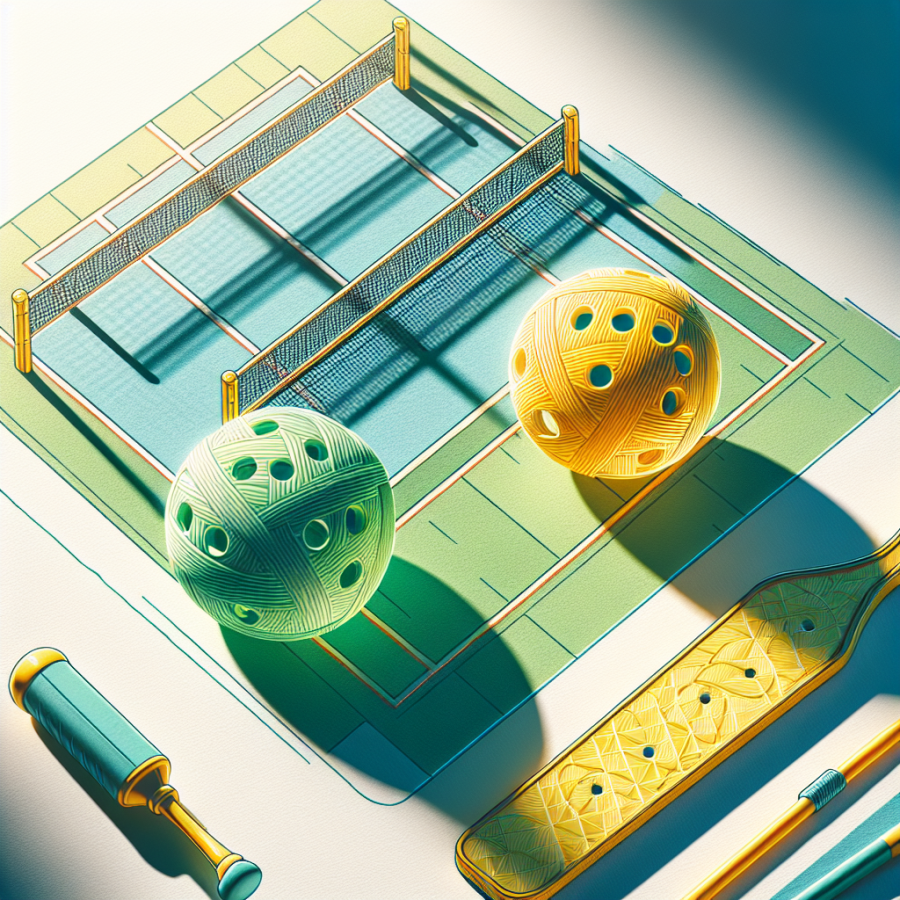Tracing the Trajectory of Pickleball's Popularity Surge
Pickleball, a sport that ingeniously combines elements from tennis, badminton, and table tennis, is no longer just a game—it's become a phenomenon sweeping through the United States at an astonishing rate. Its allure has ensnared a diverse array of participants, from fitness-focused millennials to active seniors seeking a social outlet.
The origins of pickleball can be traced back to the mid-1960s on Bainbridge Island, Washington, where it was created to provide a family-friendly pastime. However, it wasn't until the last decade that pickleball began to manifest itself as a cultural trend, transitioning from a backyard hobby to a structured sport with a formalized set of rules and competitive tournaments.
The game's infrastructure has seen impactful growth. Investment in pickleball infrastructure, such as the construction of dedicated courts in local communities and parks, reflects the game’s rising popularity. The growth of local clubs and leagues has facilitated social connections among players, further cementing pickleball’s place as a community-centric activity.
The simplicity and accessibility of pickleball are undeniable factors in its proliferation. The equipment requirements are minimal: a paddle, a plastic ball, and a net. The ease with which newcomers can engage in play, regardless of athletic ability, makes it welcoming to a broad audience. The game’s rules are easy to grasp, allowing beginners to jump into the action quickly.
Pickleball has received considerable media attention, partly due to its quirky name and partly because of its multi-generational appeal. Its visibility has been accelerated by celebrities and athletes who have taken up the sport, giving it a trendy cachet. With the emergence of professional players and the establishment of pickleball-specific athletic wear and gear, the sport has carved out a niche in the competitive sports industry.
The rise in the sport's competitive scene has been a significant aspect of its growth narrative. The establishment of national bodies like the USA Pickleball Association, which governs the sport and sanctions tournaments, has provided structure and legitimacy, while the professional pickleball tours offer a platform for top players to showcase their talents.
The health benefits associated with pickleball cannot be overlooked. It is an activity that promotes cardiovascular health, improves reflexes, and enhances coordination. The low-impact nature of the game makes it less strenuous on the body compared to other racquet sports, which is particularly appealing to the baby boomer generation looking to maintain an active lifestyle without overburdening their joints.
Exploring the Factors Behind Pickleball's Emergence as a National Pastime
Pickleball's ascension from a backyard amusement to America's latest sports obsession is a tale woven from various societal, cultural, and economic threads. The game, a hybrid of tennis, ping-pong, and badminton, has swept across the nation with an inclusivity and accessibility that few activities can match.
One of the critical factors propelling pickleball to the forefront of the national pastime discussion is its intergenerational appeal. The sport's rules and gameplay are simple enough for children to grasp, yet strategic enough to challenge older adults. This versatility means families can engage in play together, fostering a sense of community and shared experience, a rare quality in today's age of digital distraction.
Another aspect contributing to pickleball's surge is the relatively low cost of participation. With minimal equipment needs—a paddle, a plastic ball, and a modified net—it presents a low barrier to entry when compared to sports like golf or skiing. This affordability draws people from diverse economic backgrounds, democratizing the perception of the sport as one for the masses, not just the elite.
The game's design also naturally promotes social interaction, turning courts into social hubs where bonds are formed and communities are strengthened. As the sport often requires less mobility and physical exertion than tennis, it's become enormously popular among seniors looking for an engaging way to stay active. Retirement communities and senior fitness programs have played a significant role in embedding pickleball into the social fabric of older generations.
The fitness benefits of pickleball cannot be overstated. It offers a cardiovascular workout, improves reflexes, and promotes agility, all while being gentler on the joints than other racquet sports. This makes it a healthy lifestyle choice for people of all ages, but especially for those in the over-50 age bracket looking to stay physically active without the risks associated with high-impact sports.
Pickleball's rapid rise is also closely tied to its media coverage and endorsement by public figures. As celebrities and athletes share their love for the sport on social platforms, interest and curiosity grow. The media's portrayal of pickleball as a trendy and modern pastime helps dispel any lingering notions that it's just a quirky game played in school gym classes or family reunions.
Furthermore, the proliferation of dedicated pickleball courts across the nation underlines the sport's meteoric popularity. Municipalities recognizing the value of pickleball in community engagement and public health are investing in specialized facilities, often converting underused tennis courts to meet the demand.




